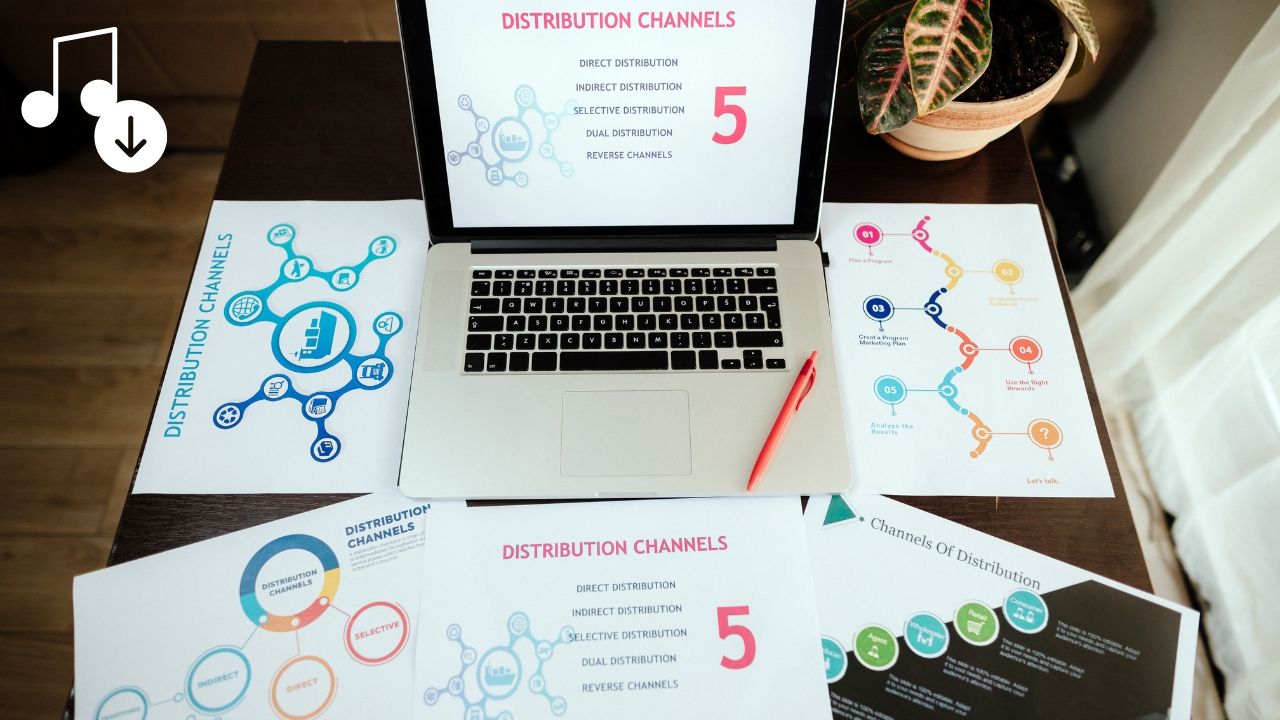Distributing music on Spotify is a key step for any musician or band aiming to reach a global audience. Spotify’s Music Distribution Requirement involves several guidelines and specifications that artists must follow to ensure their music gets accepted and distributed efficiently. This blog will explore Spotify’s Music Distribution Guidelines, Spotify’s Music Distribution Specifications, and Spotify’s Music Distribution Policies to help artists navigate this process smoothly.
What is Spotify’s Music Distribution Requirement?
Spotify’s Music Distribution Requirements is a set of rules and standards that artists must adhere to for their music to be distributed on the platform. These requirements ensure that the music uploaded maintains a high standard of quality and legality, making it suitable for Spotify’s vast audience.
Why Understanding Spotify’s Music Distribution Guidelines is Crucial
Understanding Spotify’s Music Distribution Guidelines is crucial for any artist who wants to maximize their reach and engagement on the platform. Adhering to these guidelines not only helps in getting the music approved faster but also ensures it reaches the right audience effectively.
Key Elements of Spotify’s Music Distribution Specifications
Audio Quality
One of the primary aspects of Spotify’s Music Distribution Specifications is the audio quality. Spotify requires music to be uploaded in specific formats to ensure the best listening experience for users. The recommended format is:
- File Type: WAV, FLAC, or ALAC
- Bit Depth: 16-bit or 24-bit
- Sample Rate: 44.1 kHz
Ensuring your music meets these specifications can significantly impact its sound quality and listener satisfaction.
Metadata Requirements
Proper metadata is essential for the accurate categorization and discoverability of music on Spotify. The metadata should include:
- Track Title
- Artist Name
- Album Name
- Genre
- Release Date
- Composer and Lyricist Information
Correct metadata ensures that your music is searchable and correctly attributed on Spotify.
Artwork and Image Guidelines
Spotify also has specific requirements for artwork and images associated with your music. The cover art must be:
- Size: 3000 x 3000 pixels
- Format: JPEG or PNG
- Color Mode: RGB
- Resolution: 72 dpi
Following these guidelines helps maintain a professional and appealing visual presentation of your music on the platform.
Distribution Policies and Legal Considerations
Spotify’s Music Distribution Policies include several legal considerations to protect both the artists and the platform. These policies require that:
- All music must be original or properly licensed.
- Explicit content must be clearly labeled.
- Artists must own or have the right to distribute the music.
Ensuring compliance with these policies helps avoid legal issues and ensures a smooth distribution process.
Steps to Distribute Music on Spotify
Choose a Music Distributor
Spotify does not accept direct uploads from independent artists. Instead, you need to go through a music distributor. Some popular distributors include:
These distributors handle the submission process and ensure your music meets all of Spotify’s Music Distribution Guidelines.
Prepare Your Music and Metadata
Before uploading, ensure your music files and metadata are ready and meet Spotify’s specifications. Double-check the audio quality, metadata accuracy, and artwork guidelines.
Submit Your Music
Once your distributor confirms that everything is in order, they will submit your music to Spotify. This process can take a few days to a couple of weeks, depending on the distributor and any potential issues with your submission.
Maximizing Your Reach on Spotify
Understanding and adhering to Spotify’s Music Distribution Requirements is just the first step. To maximize your reach on the platform, consider the following tips:
Create a Compelling Artist Profile
A complete and engaging artist profile can attract more listeners. Ensure your profile includes:
- A high-quality profile picture
- A detailed bio
- Links to your social media and official website
- A list of upcoming shows and events
Having a well-rounded artist profile not only increases your credibility but also makes it easier for fans to connect with you and stay updated with your latest releases and activities.
Promote Your Music
Utilize social media, email newsletters, and other marketing strategies to promote your music. Engaging with your audience regularly can help build a loyal fanbase. Consider the following strategies:
- Social Media Campaigns: Regularly post updates, behind-the-scenes content, and teasers for upcoming releases on platforms like Instagram, Facebook, and Twitter.
- Email Newsletters: Build an email list and send regular updates about new releases, upcoming shows, and exclusive content.
- Collaborations: Partner with other artists or influencers to reach a wider audience.
Get Featured on Playlists
Getting your music featured on popular Spotify playlists can significantly increase your exposure. Submit your tracks to playlist curators and engage with them on social media. Spotify’s algorithm also favors tracks that get added to playlists, so this can boost your visibility on the platform.
Common Pitfalls to Avoid
While following Spotify’s Music Distribution Requirements, be mindful of these common pitfalls:
Poor Audio Quality
Uploading low-quality audio files can result in a poor listening experience and lower your chances of being featured on playlists. Always ensure your tracks are professionally mixed and mastered before submission.
Inaccurate Metadata
Incorrect or incomplete metadata can make your music difficult to find and may result in misattribution. Double-check all metadata fields to ensure accuracy.
Ignoring Artwork Guidelines
Failing to adhere to Spotify’s artwork guidelines can lead to delays in your music’s release. Make sure your cover art meets all the specified requirements to avoid any issues.
Future Trends in Spotify’s Music Distribution Policies
Spotify continually updates its policies and guidelines to improve user experience and adapt to new technologies. Keeping up-to-date with these changes ensures your music remains compliant and competitive. Some emerging trends include:
- Increased Focus on User-Generated Content: Spotify is exploring ways to incorporate more user-generated content into its platform. This includes playlists, podcasts, and other forms of audio content.
- Enhanced Analytics and Reporting Tools: Spotify is continually improving its analytics and reporting tools to provide artists with better insights into their audience and performance.
- Integration with Social Media Platforms: Spotify is working on deeper integrations with social media platforms to help artists promote their music more effectively.
Tips for New Artists on Spotify
For new artists, breaking into the Spotify scene can be challenging. Here are some additional tips to help you get started:
Utilize Spotify for Artists
Spotify for Artists provides valuable tools and insights to help you manage your music on the platform. You can update your profile, pitch your music to playlists, and gain access to analytics about your listeners.
Engage with Your Audience
Building a strong connection with your audience is key to your success on Spotify. Respond to comments, share fan content, and show appreciation for your supporters.
Release Music Regularly
Consistent releases keep your audience engaged and can help you stay relevant on the platform. Plan your releases strategically and keep your fans excited about your music.
The Role of Analytics in Spotify’s Music Distribution Requirements
Understanding your audience and their listening habits is crucial for success on Spotify. The platform offers detailed analytics that can help you:
- Track Performance: Monitor how your tracks are performing over time.
- Identify Trends: Identify which tracks or albums are resonating most with your audience.
- Understand Demographics: Gain insights into the demographics of your listeners, including age, gender, and location.
Using this data, you can make informed decisions about your marketing strategies and future releases.
Leveraging Spotify’s Tools for Promotion
Spotify offers several tools that can help you promote your music and engage with your audience:
- Spotify Ad Studio: Create and manage audio ads to promote your music to a wider audience.
- Marquee: Use Spotify’s Marquee tool to promote new releases directly to your followers and listeners.
- Spotify Codes: Generate unique Spotify Codes for your tracks, albums, or playlists to make sharing easier.
Importance of Engaging Content
Creating engaging content goes beyond just the music. It includes everything from your social media posts to your music videos. Engaging content helps you connect with your audience on a deeper level. Here are some ideas:
- Behind-the-Scenes Footage: Share clips from your recording sessions or tour.
- Personal Stories: Talk about the inspiration behind your songs or your journey in the music industry.
- Interactive Content: Host Q&A sessions, live streams, or contests to engage your fans.
Building a Community
Creating a community around your music can help foster loyalty and word-of-mouth promotion. Consider starting a fan club, creating exclusive content for your most dedicated fans, or hosting meet-and-greet events. Engaging with your community regularly will help build a strong, supportive fan base.
Collaborating with Other Artists
Collaborations can open up new opportunities and expose your music to different audiences. Collaborating with artists from different genres or backgrounds can bring a fresh perspective to your music and help you reach a wider audience.
Utilizing Paid Promotions
While organic reach is important, utilizing paid promotions can significantly boost your visibility. Consider investing in targeted ads on social media platforms, sponsored posts, and paid playlist placements. Paid promotions can help you reach a larger audience more quickly and effectively.
Staying Updated with Industry Trends
The music industry is constantly evolving, and staying updated with the latest trends can give you a competitive edge. Follow industry news, attend music conferences, and network with other professionals to stay informed about the latest developments in music distribution, marketing, and technology.
Conclusion
Navigating Spotify’s Music Distribution Requirements can seem daunting, but with a clear understanding of the guidelines and careful preparation, you can ensure a smooth and successful distribution process. By adhering to Spotify’s Music Distribution Guidelines and Spotify’s Music Distribution Specifications, you can maximize your music’s reach and impact on one of the world’s leading music streaming platforms.
By leveraging tools and strategies effectively, artists can ensure their music not only gets distributed on Spotify but also reaches the widest possible audience, giving them the best chance of success in the competitive music industry. Staying updated with trends, engaging with your audience, and using data-driven decisions can significantly enhance your visibility and growth on the platform.
Following Spotify’s Music Distribution Requirements ensures that your music meets the platform’s standards and reaches the intended audience effectively. Remember to keep up with the evolving trends and make use of all available tools to optimize your music distribution process. With the right approach, your music can achieve great success on Spotify.
For further reading, explore these related articles:
- Deliver My Tune’s Exciting New Services!
- Why is There a Need for Digital Aggregators in Music Distribution?
For additional resources on music marketing and distribution, visit Deliver My Tune.






